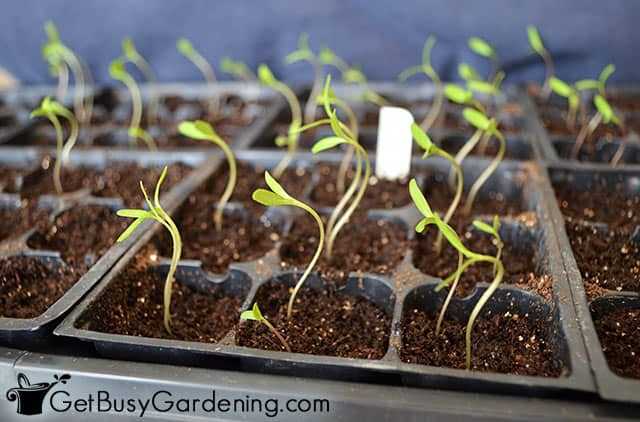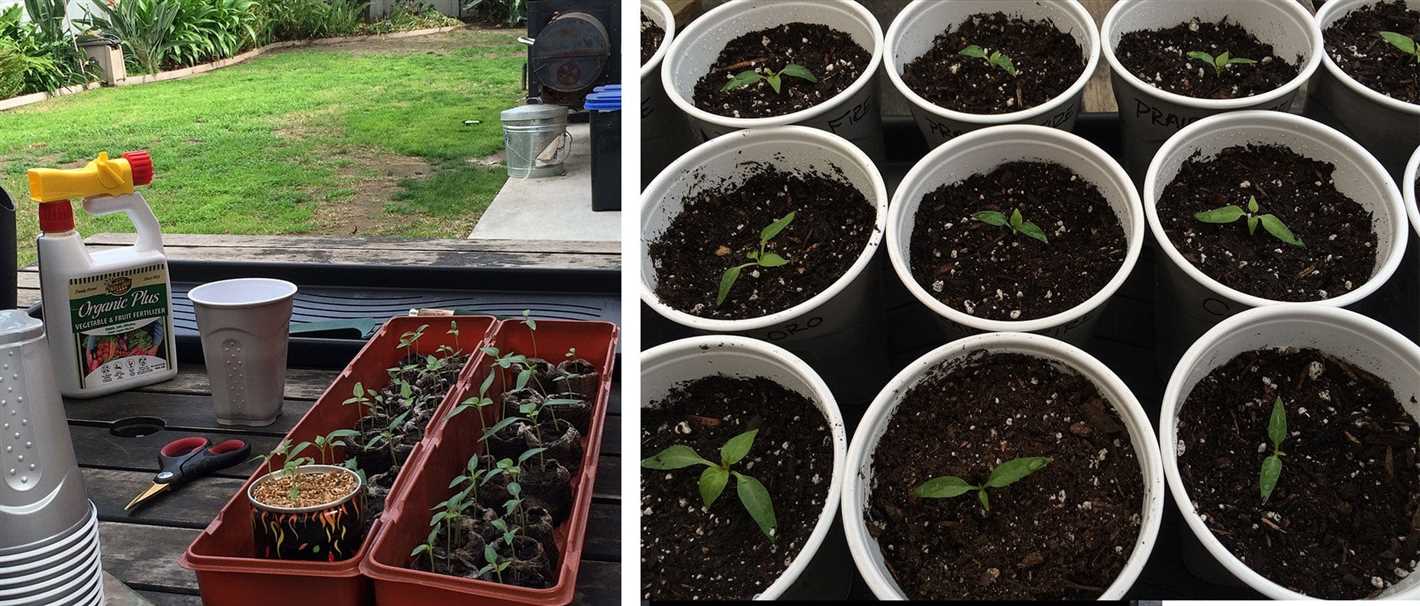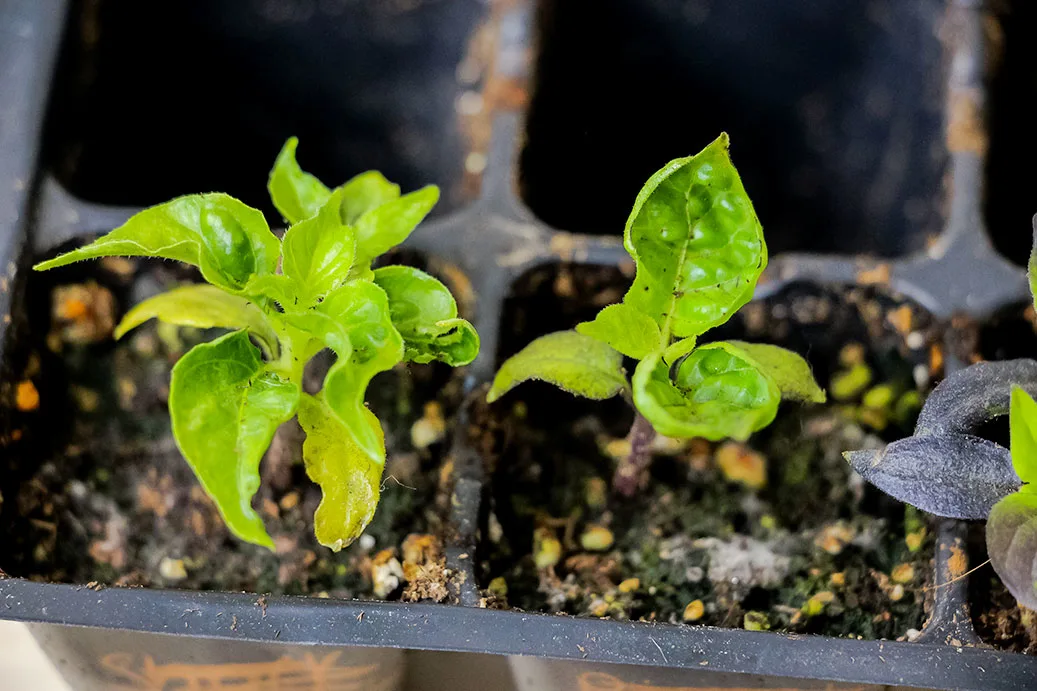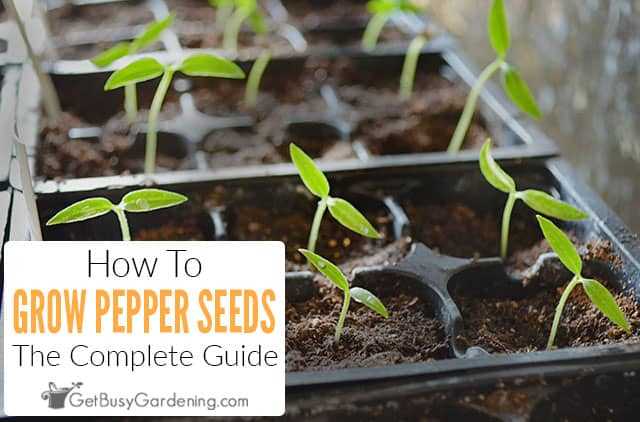- Benefits of Hydrogel for Pepper Seedlings
- Choosing the Right Pepper Varieties for Pickling
- Heat Level
- Size and Shape
- Flavor Profile
- Availability
- Recommended Pepper Varieties for Pickling
- Preparing the Hydrogel for Sowing
- Sowing Pepper Seeds on Hydrogel
- Materials needed:
- Step-by-step guide:
- Caring for Pepper Seedlings on Hydrogel
- Watering
- Lighting
- Temperature
- Fertilization
- Support
- Pest and Disease Control
- Transplanting
- Maintenance
- Transplanting Pepper Seedlings from Hydrogel to Soil
- Pickling Pepper Seedlings: Step-by-Step Instructions
- Materials You Will Need:
- Step 1: Preparing the Hydrogel
- Step 2: Soaking the Pepper Seedlings
- Step 3: Pickling the Pepper Seedlings
- Step 4: Sealing and Storing
- Step 5: Post-Pickling Care
- Note:
- Tips for Successful Pickling of Pepper Seedlings
- “Question-Answer”
- What is hydrogel and how does it work?
- Can I use hydrogel for all types of peppers?
- How do I sow pepper seedlings on hydrogel?
- What are the benefits of sowing pepper seedlings on hydrogel?
- How often should I water pepper seedlings sown on hydrogel?
- Can I reuse the hydrogel after the pepper seedlings are transplanted?
- “Video” Growing PEPPERS from seed and weird TOMATOES!
Are you looking for a foolproof way to start growing pepper seedlings? Look no further! In this comprehensive guide, we will walk you through the process of pickling pepper seedlings sown on hydrogel. This innovative technique involves using hydrogel as a substrate for germinating and growing pepper seeds, ensuring optimal conditions for their development.
Why choose hydrogel?
Hydrogel is a water-absorbing polymer that can hold up to 400 times its weight in water. This unique property makes it an ideal medium for seed germination, as it provides a consistent and controlled source of moisture. By sowing pepper seeds on hydrogel, you can eliminate the risk of overwatering or underwatering, leading to healthier and more robust seedlings.
The benefits of pickling pepper seedlings
When sowing pepper seeds on hydrogel, the seedlings are given the best possible start. The moisture provided by the hydrogel promotes faster germination and root development, leading to stronger plants. Additionally, the use of hydrogel reduces the risk of soil-borne diseases and pest infestations, as the seedlings are grown in a sterile environment. This method also allows for easier transplanting, as the root systems grow more uniformly and are less likely to be damaged during the process.
“Pickling pepper seedlings sown on hydrogel is a game-changer for pepper growers. It streamlines the germination process and ensures optimal conditions for the seedlings’ development, resulting in healthier and more productive plants.”
Step-by-step guide
Now that you’re convinced of the benefits of pickling pepper seedlings on hydrogel, let’s dive into the step-by-step process. First, you’ll need to prepare the hydrogel by following the manufacturer’s instructions for hydration. Once the hydrogel is ready, spread it evenly on a tray or container, ensuring a thickness of about 1 inch. Next, sow the pepper seeds on the hydrogel, spacing them out evenly. Cover the seeds with a thin layer of hydrogel to protect them and provide additional moisture. Finally, place the tray or container in a warm and well-lit area, and ensure the hydrogel remains consistently moist throughout the germination and growth period.
Benefits of Hydrogel for Pepper Seedlings

Hydrogel is a water-absorbing polymer that can be used as a growing medium for pepper seedlings. It offers several benefits that make it an ideal choice for growing healthy and robust plants:
- Water retention: Hydrogel has the ability to absorb and retain water, providing a constant supply of moisture to the seedlings. This helps prevent under and over-watering, ensuring optimal hydration for the plants.
- Reduced watering frequency: Due to its water-absorbing properties, hydrogel can help reduce the frequency of watering. This is particularly beneficial in areas with limited water resources or for growers who have limited time for plant care.
- Enhanced nutrient absorption: Hydrogel can also absorb and retain nutrients, making it easier for the pepper seedlings to take up essential minerals and trace elements. This promotes healthy growth and development.
- Improved root development: The presence of hydrogel in the growing medium can encourage root growth and development. The gel-like structure of hydrogel provides a supportive environment for root proliferation, resulting in a strong and well-established root system.
- Reduced transplant shock: When transplanting pepper seedlings grown on hydrogel, the gel can remain around the roots, creating a protective barrier that helps reduce transplant shock. This allows the plants to adapt more smoothly to their new growing conditions.
In addition to these benefits, hydrogel can also help regulate temperature and moisture levels, reduce soil compaction, and improve overall plant health. Its use in growing pepper seedlings can result in higher yields, improved plant vigor, and a more efficient use of resources.
Choosing the Right Pepper Varieties for Pickling
Different pepper varieties have different flavors, textures, and heat levels, making it important to choose the right peppers for pickling. Below are some factors to consider when selecting pepper varieties for pickling.
Heat Level
Peppers vary in heat level, which is measured by the Scoville scale. The heat level of peppers ranges from mild to extremely hot. When pickling peppers, it is important to consider the desired level of spiciness for your pickles. Some popular choices for pickling include jalapenos, serranos, and habaneros for those who enjoy a spicier pickle.
Size and Shape
Peppers come in various sizes and shapes, and the size and shape of the pepper can affect the pickling process. Some peppers, such as pimentos or banana peppers, are perfect for stuffing and pickling whole. Others, like bell peppers, can be sliced into rings or strips for pickling. Consider the size and shape of the pepper you prefer for your pickles.
Flavor Profile
Peppers offer a range of flavors, from sweet to tangy to spicy. The flavor profile of the pepper can greatly influence the taste of your pickles. Some peppers, like bell peppers, have a mild and sweet flavor, while others, like poblano peppers, have a smoky and earthy taste. Experiment with different pepper varieties to find the flavor profile that works best for your pickles.
Availability
The availability of pepper varieties can also play a role in your selection. Depending on your location and the time of year, certain pepper varieties may be more readily available than others. Consider what peppers are in season and locally sourced to ensure the best flavor and quality for your pickles.
Recommended Pepper Varieties for Pickling
Here are some popular pepper varieties that are commonly used for pickling:
- Jalapenos
- Serranos
- Habaneros
- Banana Peppers
- Pimentos
- Bell Peppers
- Cayenne Peppers
- Cherry Peppers
Experiment with different pepper varieties to find the perfect combination of heat, flavor, and texture for your pickling recipes.
Preparing the Hydrogel for Sowing
To successfully sow your pepper seedlings on hydrogel, it is essential to prepare the hydrogel properly. Follow these steps to ensure the optimal environment for germination:
- Choose a quality hydrogel: Select a hydrogel that is specifically designed for plant growth. Read the label to ensure it is suitable for sowing pepper seedlings.
- Soak the hydrogel: Place the required amount of hydrogel beads in a clean, empty container. Add water to submerge the beads completely. Allow the hydrogel to soak for the recommended time specified on the packaging. This step is crucial as it allows the beads to absorb water and expand.
- Drain excess water: After the soaking period, carefully drain any excess water from the container. The hydrogel beads should be plump and fully hydrated, but not waterlogged.
- Mix in nutrients: If desired, you can mix in a suitable plant nutrient solution to enhance the growth of your pepper seedlings. Follow the recommended dilution rates and instructions provided by the manufacturer.
- Create individual planting pockets: Use a spoon or your fingers to create small holes or pockets in the hydrogel. These pockets will be used to sow the pepper seeds. Make sure the pockets are evenly spaced and deep enough to accommodate the seeds.
By following these steps, you will have properly prepared the hydrogel for sowing your pepper seedlings. The next step is to sow the seeds and provide the necessary care for the successful germination and growth of your pepper plants.
Sowing Pepper Seeds on Hydrogel
Pepper seeds can be sown on a hydrogel medium to help improve germination and provide a suitable growing environment for the seedlings. Hydrogel is a water-absorbent polymer that can hold moisture and nutrients, providing a more efficient way of supplying water to the plants.
Materials needed:

- Pepper seeds
- Hydrogel beads
- Containers or trays
- Water
- Planting medium
Step-by-step guide:

- Soak the hydrogel beads in water for a few hours to allow them to absorb the water and expand.
- Prepare the containers or trays by filling them with a planting medium, such as soil or a soilless mix.
- Place a layer of the expanded hydrogel beads on top of the planting medium in the containers or trays.
- Moisten the hydrogel beads by adding water, ensuring they are fully hydrated but not waterlogged.
- Sow the pepper seeds on top of the moist hydrogel beads, spacing them evenly and covering them lightly with a thin layer of planting medium.
- Water the containers or trays from the bottom by placing them in a tray filled with water and allowing the hydrogel beads to absorb the moisture.
- Keep the containers or trays in a warm and well-lit area, providing the seeds with the appropriate temperature and light conditions for germination.
- Monitor the moisture level of the hydrogel beads and water as necessary to keep them adequately hydrated.
- Once the pepper seedlings have grown to a suitable size, they can be transplanted into individual pots or into a garden bed.
Sowing pepper seeds on hydrogel can help improve germination rates and provide a more efficient way of supplying water to the seedlings. It is important to monitor the moisture level of the hydrogel beads and provide the seedlings with the appropriate temperature and light conditions for successful growth.
Caring for Pepper Seedlings on Hydrogel
Once you have successfully sown your pepper seedlings on hydrogel, it is important to provide them with the proper care to ensure their healthy growth and development. Here are some key steps to follow:
Watering
Hydrogel provides excellent water retention, but it’s important not to overwater the seedlings. Check the moisture level by inserting your finger into the hydrogel and water only when it feels dry. Irrigate the hydrogel gently and avoid water accumulation.
Lighting
Pepper seedlings require ample sunlight or artificial light to thrive. Place them in a well-lit area where they receive at least 6 to 8 hours of direct sunlight per day. If using artificial light, ensure that it provides the necessary spectrum for plant growth.
Temperature
Pepper seedlings prefer warm temperatures for optimal growth. Maintain a temperature range of 70-85°F (21-29°C) during the day and 60-70°F (15-21°C) at night. Avoid exposing the seedlings to extreme temperatures or drafts that can stunt their growth.
Fertilization
As the pepper seedlings grow, they will require additional nutrients to support their development. Start fertilizing the seedlings once they have their first true leaves. Use a balanced fertilizer and follow the manufacturer’s instructions for application rates.
Support
As the pepper plants grow taller, they may need support to prevent them from bending or breaking. Provide stakes or cages to support the plants and secure them gently without damaging the delicate stems.
Pest and Disease Control
Monitor the pepper seedlings regularly for any signs of pests or diseases. Common pests that can affect pepper plants include aphids, spider mites, and whiteflies. If you notice any infestation, take appropriate measures to control them, such as using insecticidal soaps or organic pest control methods.
Transplanting
Once the pepper seedlings have grown 4-6 true leaves and the weather conditions are suitable, they can be transplanted into their final growing containers or outdoor garden. Carefully remove the seedlings from the hydrogel, ensuring not to damage the roots, and transplant them into well-prepared soil.
Maintenance

Continue to provide care and maintenance to the pepper plants as they grow. This includes regular watering, fertilization, pruning to maintain shape and promote branching, and providing adequate support as needed.
Following these care guidelines will help ensure the healthy growth and development of your pepper seedlings on hydrogel. With proper care, you can look forward to a bountiful harvest of delicious peppers!
Transplanting Pepper Seedlings from Hydrogel to Soil
Transplanting pepper seedlings from hydrogel to soil is an important step in the growth process. Here are the steps for successfully transplanting your pepper seedlings:
- Prepare the soil: Choose a location with well-drained soil and mix in some compost or organic matter to improve the soil’s fertility.
- Water the soil: Before transplanting, make sure the soil is already moist. This will ensure that the transplanting process goes smoothly.
- Remove the seedlings from the hydrogel: Gently remove the pepper seedlings from the hydrogel, taking care not to damage the roots.
- Dig holes in the soil: Dig holes in the prepared soil that are deep enough to accommodate the roots of the pepper seedlings.
- Plant the seedlings: Place the pepper seedlings in the holes, making sure that the roots are spread out and not bunched up. Fill the holes with soil, pressing it gently around the seedlings.
- Water the transplanted seedlings: After the seedlings have been planted, water them thoroughly to ensure that the soil is settled and the roots are in contact with it.
- Provide support if needed: If your pepper variety requires support, such as stakes or cages, now is the time to provide it. This will help the plants grow upright and reduce the chance of breakage.
- Protect the seedlings: If there is a risk of frost or cold temperatures, cover the young seedlings with a row cover or cloche to provide extra protection.
- Maintain care: Continue to water the transplanted seedlings regularly, providing adequate sunlight and fertilizing as needed.
Following these transplanting steps will help ensure a successful transition from hydrogel to soil for your pepper seedlings. With proper care and attention, your pepper plants will thrive and produce a bountiful harvest.
Pickling Pepper Seedlings: Step-by-Step Instructions
Materials You Will Need:
- Pepper seedlings
- Hydrogel
- Pickle solution
- Container for pickling
- Pickling tools (e.g. tongs, gloves)
Step 1: Preparing the Hydrogel
- Follow the instructions on the hydrogel packaging to prepare the hydrogel beads.
- Ensure that the hydrogel beads are fully hydrated and have a gel-like consistency.
Step 2: Soaking the Pepper Seedlings
- Gently remove the pepper seedlings from their original containers.
- Place the pepper seedlings in a container filled with water.
- Allow the pepper seedlings to soak in water for 10-15 minutes to ensure they are well-hydrated.
Step 3: Pickling the Pepper Seedlings
- Prepare the pickle solution according to the instructions on the packaging.
- Transfer the hydrated hydrogel beads into a container suitable for pickling.
- Dip each pepper seedling into the pickle solution, ensuring that the roots are fully submerged.
- Place the pickled pepper seedlings on top of the hydrogel beads in the pickling container.
- Repeat the process for all the pepper seedlings.
Step 4: Sealing and Storing
- Ensure that all the pickled pepper seedlings are properly arranged in the pickling container.
- Seal the pickling container tightly to prevent air and moisture from entering.
- Store the pickled pepper seedlings in a cool, dark place for the designated pickling time indicated on the pickle solution packaging.
Step 5: Post-Pickling Care
- After the pickling time has elapsed, carefully remove the pickled pepper seedlings from the container.
- Gently rinse the pickled pepper seedlings under running water to remove any excess pickle solution.
- Transplant the pickled pepper seedlings into their desired growing containers or garden beds.
- Water the pickled pepper seedlings regularly and provide appropriate care to ensure their healthy growth.
Note:
Always follow the instructions provided by the hydrogel and pickle solution manufacturers for best results.
Tips for Successful Pickling of Pepper Seedlings
- Choose healthy seedlings: Select seedlings that are strong, disease-free, and have well-developed root systems.
- Prepare a good growing medium: Use a well-draining potting mix that is high in organic matter and nutrients to provide optimum conditions for the seedlings.
- Transplant seedlings at the right stage: Wait until the seedlings have at least two sets of true leaves before transplanting them into individual pots or larger containers.
- Provide adequate sunlight: Place the seedlings in a sunny location where they will receive at least 6-8 hours of direct sunlight each day.
- Water regularly: Keep the seedlings evenly moist, but not waterlogged. Use a watering can or a spray bottle to gently water the seedlings to avoid disturbing their delicate root systems.
- Fertilize appropriately: Use a balanced liquid fertilizer or slow-release fertilizer to provide the seedlings with the necessary nutrients for healthy growth.
- Protect from pests: Monitor the seedlings regularly for signs of pests such as aphids or spider mites. If necessary, use organic pest control methods or insecticidal soap to protect the seedlings.
- Prune and train the seedlings: As the seedlings grow, pinch off the top leaves to encourage branching and bushier growth. Use stakes or trellises to support the seedlings and prevent them from falling over.
- Harvest at the right time: Pick the peppers when they are fully ripe and have reached their desired size. This will ensure the best flavor and texture in the pickled peppers.
“Question-Answer”
What is hydrogel and how does it work?
Hydrogel is a water-absorbing polymer that is often used in gardening. It can absorb and retain large amounts of water, which helps to provide a constant water supply to plants. When pepper seedlings are sown on hydrogel, it ensures that they have access to water even when the soil dries out.
Can I use hydrogel for all types of peppers?
Yes, hydrogel can be used for all types of peppers. Whether you are growing bell peppers, jalapenos, or habaneros, sowing the seedlings on hydrogel can help provide a constant water supply and improve overall growth.
How do I sow pepper seedlings on hydrogel?
To sow pepper seedlings on hydrogel, you will first need to prepare the hydrogel by following the instructions on the packaging. Once the hydrogel is ready, place a layer of it in a tray or pot, and then sow the pepper seeds on top. Make sure to cover the seeds lightly with a thin layer of soil or hydrogel. Water the tray or pot gently, and the hydrogel will absorb and retain the moisture for the seedlings.
What are the benefits of sowing pepper seedlings on hydrogel?
Sowing pepper seedlings on hydrogel offers several benefits. It provides a constant water supply to the seedlings, ensuring they are not stressed by drought conditions. It also helps to promote uniform germination and growth, as the seedlings have access to moisture at all times. Additionally, using hydrogel can reduce water usage, as the polymer retains water for longer periods.
How often should I water pepper seedlings sown on hydrogel?
The frequency of watering pepper seedlings sown on hydrogel will depend on various factors such as the temperature, humidity, and the size of the seedlings. Generally, it is recommended to water once every 2-3 days or as needed to keep the hydrogel moist. Avoid overwatering, as it may lead to root rot.
Can I reuse the hydrogel after the pepper seedlings are transplanted?
Yes, you can reuse the hydrogel after the pepper seedlings are transplanted. Simply remove the seedlings from the hydrogel and wash it thoroughly to remove any debris. The hydrogel can then be rehydrated and reused for future gardening projects.







